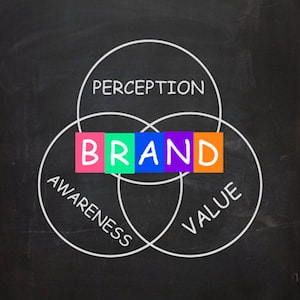A Definition of Experiential Marketing
An advertising strategy that focuses on helping consumers experience a brand, experiential marketing veers off course from traditional strategies that broadcast brand and product benefits to a wide audience. Also referred to as engagement marketing, experiential marketing may be comprised of a variety of marketing strategies geared toward immersing customers within the product by engaging them in as many ways as possible. Ultimately, companies utilizing this strategy want to help customers form memorable, emotional connections with a brand to foster customer loyalty and improve customer lifetime value (CLV).
Experiential Marketing Best Practices
Companies that succeed with this strategy go beyond giving consumers attractive offers and samples. True magic happens when brands put individual customers or groups of consumers in an immersive branded experience. Thus, brands must go beyond PR stunts, display ads, and promoted social media ads to stir positive emotions in people and foster brand loyalty. Successful campaigns encourage customers to repeatedly come back in order to  influence their customer lifetime value.
influence their customer lifetime value.
As with any other type of marketing strategy, companies should make use of best practices. One of the most important aspects of this immersive marketing approach is putting the consumer first (aka being customer centric). You must put yourself in the mind of the consumer to successfully engage your audience; doing so will foster brand ambassadors – brand warriors who promote your brand just as well as (sometimes even better than) your top salespeople. The easiest way to increase brand loyalty among your customers is to put yourself in their shoes.
Marketers also understand the power of storytelling, and experiential marketing lends itself to storytelling extremely well. Consumers who identify with a story make stronger connections to brands and have the emotional responses marketers strive to create. We experience well-told stories rather than simply listening to them, and we are more apt to repeat a brand’s story when we identify strongly with it, particularly on a deep emotional level. The best stories are truthful, are infused with personalities, involve characters the audience feels compelled to root for, and include a beginning, middle, and end.
Additional best practices include:
- Set clear goals and outcomes
- Determine ways to measure those goals and outcomes
- Identify and exhaustively research your target market
- Remember why experiential marketing works
- Devise a creative, exciting, and impactful activation
- Find ways to maximize online engagement through social media and other channels
- Give people something of value
Benefits of Experiential Marketing
Brands benefit any time they make customers happy, and experiential marketing gives consumers the feel-good emotions needed to cultivate true brand loyalty – the recipe for creating brand warriors who spread the word about their favorite companies and products.
The most rewarding benefit of this marketing strategy is the way in which it drives word-of-mouth advertising; research conducted by Google, Ogilvy, and McKinsey shows that consumers are influenced more by word-of-mouth when making purchasing decisions than they are by print media, television, movies, and  brand websites. In fact, “experiential brand experience is the most powerful form of word-of-mouth driving activity for 50 to 80% in any given product category.” Thus, one of the best ways to gain a competitive edge is to steer marketing efforts toward building strong connections with customers via experiential marketing.
brand websites. In fact, “experiential brand experience is the most powerful form of word-of-mouth driving activity for 50 to 80% in any given product category.” Thus, one of the best ways to gain a competitive edge is to steer marketing efforts toward building strong connections with customers via experiential marketing.
Examples of Experiential Marketing
Some people confuse this type of strategy with PR stunts, while others may see it as a form of event marketing, but that’s not really the case. Hubspot senior staff writer Amanda Zantal-Wiener claims that the key is to make sure that your efforts hinge on creating unique, face-to-face experiences with your brand that give consumers the opportunity to interact with the brand in person. While some campaigns may be event-centric, they should zero in on the interaction with the brand.
To help make the distinction, Zantal-Wiener points to some of the “coolest experiential marketing campaigns” that Hubspot has seen. They include the Lean Cuisine #WeighThis campaign that led to 204 million total impressions, Google’s Build a Better Bay Area campaign that generated more than 400,000 votes in roughly three and a half weeks, and the GE Healthymagination campaign that won a Business Marketing Association Tower Award.
Additional Resources on Experiential Marketing
For more information about experiential marketing, visit our blog. For your convenience, we have linked to three of our most recent posts below:
- What is Customer Experience Marketing? Challenges, Benefits and Best Practices for Effective CX Marketing
- 32 Digital Marketing Experts Reveal Their Top Strategies for Creating a Great Digital Experience for Customers
- Conversational Marketing: 24 Thought Leaders Reveal the Keys to Successful Conversational Marketing Campaigns






